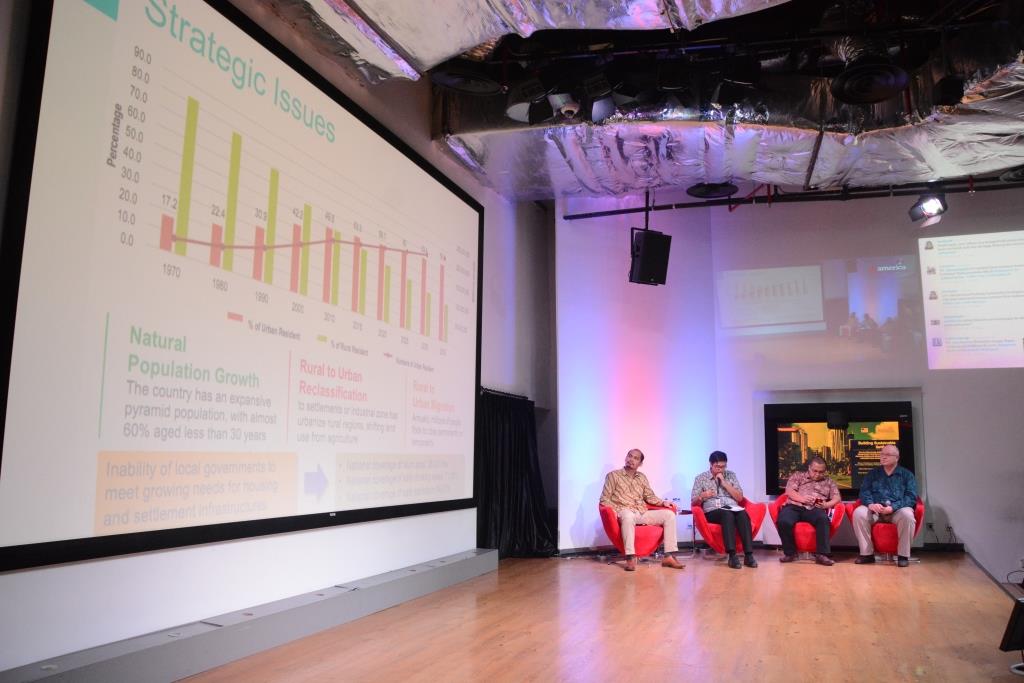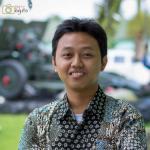How do cities manage challenges in their urban infrastructure? Policy, human resources, building, and adequate drainage, all support sustainable urban development and planning
Speakers
- Dwityo A. Soeranto: Director of Infrastructure Integration Settlement, Directorate of Human Settlement, MoPWPH
- Wahyu Mulyana: Executive director, Urban Regional Development Institute
- Gordon Steffensmeirer: Public Works and Community Development Department, City of Albany, Oregon
Cities are the future. A city attracts many people due to its diverse resources and opportunities for some people for a better life. It is estimated that by 2050, more than half of the world population will be living in a city without proper preparation and planning by the city government which will have added burdens and stresses to city. One of the ways for a city to prepare itself to face this challenge is by building proper settlement for sustainability and this is what has been discussed in an open forum at @america hosted by APEKSI (Association of Municipalities in Indonesia) on 3rd March 2017. APEKSI brings experts from Indonesia and USA together to discuss what it takes to build sustainable and resilient settlements to face the rapid increase in migration and urbanisation in order to make our cities liveable. We have three distinguished speakers contributing to this insightful open forum: Wahyu Mulyana from the Urban Regional Development Institute (URDI); Dwityo A Soeranto , from the Indonesian Ministry of Public Works and Public Housing; and Gordon Steffensmeier from the City of Albany, Oregon, USA”.
In this fruitful discussion, the experts explore different ideas about programs that promote the integrated management of public services and the empowering of communities. In Albany, Oregon, USA, one of the programs that they have implemented is integrated waste management which enables the city to manage their grey water. This established system arose from a need to tackle the huge problems of water pollution they faced in the early to mid 1900s. The US experience shows that a sanitation system must be in place before city becomes highly develop in order to create a liveable city with improving public health.
In Indonesia, the Ministry of Public Works and Housing (MOPWH) presented their programs in tackling rapid population growth in cities for sustainability. They mentioned that the city’s ability to manage a rapid rate of migration is very crucial as this will put pressure on local government, especially for housing and settlement as there will be more demand and where the demand is not met, slum areas will emerge, currently there are more than 30,000 Ha of slums in Indonesia.
Programs provided by the MOPWH in their National Mid-Term Development Plan 2015-2019 are:
- Achieving universal access to safe drinking water through development of water supply systems at regional, city, district, and neighbourhood levels in both urban and rural areas.
- Eliminating urban slum areas through upgrading efforts in slums covering 36,431 Ha and a community empowerment program in 7,683 sub-districts across Indonesia.
- Increasing access to adequate sanitation (domestic waste water, solid waste, and drainage systems) to 100% to meet basic needs at regional, city, district, and neighbourhood levels in urban and rural areas.
- Improving building security and safety, as well as enhancing and maintaining the harmony of buildings with their surrounding environment through (1) developing and monitoring of state-owned buildings; (2) developing regulations on green building, as well as implementing green building development; (3) establishing of local building codes.
The vision for sustainable urban development involves more:
- Liveable cities that are safe and comfortable
- Green cities that are resilient to climate change and disaster
- Smart cities that are competitive and based on technology
The Indonesian government is actively collaborating with international agencies and governments such as the USA to provide improved public services and achieve their targets such as through the IUWASH program (Indonesia Urban Water, Sanitation, and Hygiene), with a total investment of US$2.5 million for improved water services and sanitation.
In support of the vision of MOPWH, Wahyu from URDI states that, in addition to rapid urban population growth and the policy of decentralisation of Indonesia, the challenges faced by city administrators include : increased demand for services, decreasing land availability, especially in urban centres, declining quality of services, limited access to financing, increased frequency of floods and other climate related disasters, lack of supportive policy and regulation as an enabling framework, and fiscal capacity is limited to the city’s income itself, making it hard for other cities with mostly medium or low level financial capacity to finance their city programs.
She states the importance of having non-state actors support and play a role in the development to fill the gap of city government where resources are limited. Many initiatives have derived from NSAs initiatives in cities across Indonesia such as controlled landfill and converting waste to energy in Malang; Energy revolution in Kupang; urban farming “Terminal Benih”; the restoration of Ciliwung in Jakarta; and a rainwater harvesting program in Semarang. Looking at the different initiatives by NSAs, it can be concluded that it is important to seek initiatives that emerge from the grassroots that could contribute to achieving development. These should be smart initiatives can be used as a way to build pride and strong local identity which is important for building urban resiliency.
For more information on the presentation please find the link here.
Photo credit: @america





